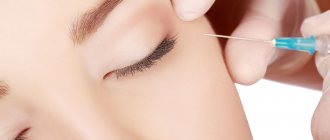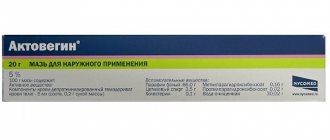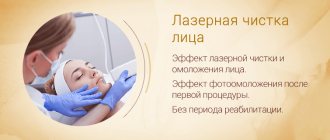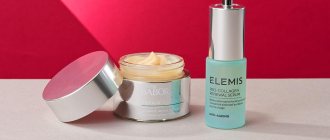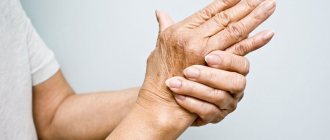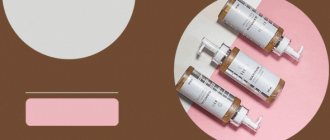EFFECT OF BOTOX
The facial muscles have a peculiar anatomical structure: they are attached to the bone at one end, and the other end is woven into the skin.
Due to their location, the muscles, when contracting, move the skin, and certain emotions are displayed on the face.
Habitual emotions and increased tone of certain facial muscles lead to the formation of facial wrinkles.
Each muscle has nerve fibers that are responsible for transmitting nerve impulses from the brain to the muscle and causing its contraction. The active substance of Botox, botulinum toxin, after being introduced into muscle tissue, penetrates the endings of nerve fibers and blocks the transmission of nerve impulses. The muscles relax and stop stretching or wrinkling the skin, so wrinkles and creases are smoothed out.
ANALOGUES OF THE DRUG
In addition to Botox, botulinum toxin-based drugs such as Dysport and Xeomin are now common on the cosmetic market. Basically, the drugs differ in the dosage of botulinum toxin and resistance to changing storage conditions.
Estimated consumption of Botox, Dysport, Xeomin
| Impact area | Botox | Dysport | Xeomin |
| Forehead | 5-30 units. | 15-90 units. | 10-20 units. |
| Between the eyebrows | 15-30 units. | 45-90 units. | 10-20 units. |
| Eye area | 10-20 units. | 30-60 units. | 16-24 UNITS |
| Nose area | 2-10 units. | 6-30 units. | 4-6 units. |
| Lip area | 4-16 UNITS | 12-48 UNITS | 2-4 units. |
| Neck, décolleté | from 60 units. | from 180 units. | from 60 units. |
| Axillary areas | 60-200 units. | 180-600 units. | 100-200 units. |
How does botulinum toxin work?
In youth, the skin is elastic, and small wrinkles that appear as a result of the movement of facial muscles are easily smoothed out. However, with age, elasticity decreases and wrinkles become deeper. In addition, facial muscles acquire the ability to fixate in one position. For example, if a person is used to frowning, the facial muscles are fixed in a constant spasmodic position. A person has to make a huge effort of will to give his face a friendly expression.
Botulinum toxin drugs block neuromuscular transmission. When Botox is injected into a muscle, its ability to contract is reduced. And when the muscle does not contract, the skin over it does not fold. Wrinkles are gradually smoothed out. In this case, the muscle does not atrophy, because the blood supply to it does not stop, which means that nutrients continue to flow to the muscle fiber.
Contrary to rumors, facial expressions after using drugs based on botulinum neurotoxin do not disappear, but simply become calmer and more controlled. The face will not turn into a mask and will not lose its expressiveness. You will still frown, smile, be surprised. Only longitudinal grooves will disappear on the forehead, deep folds on the bridge of the nose, “crow’s feet” around the eyes, and “marionette lines” between the nose and the corners of the lips. The skin will glow with health and youth!
INDICATIONS FOR ADMINISTRATION
Elimination and smoothing of wrinkles:
- Horizontal wrinkles on the forehead;
- Vertical wrinkles between the eyebrows;
- Oblique wrinkles on the bridge of the nose (they are also called “rabbit wrinkles”);
- Wrinkles at the outer corner of the eye;
- Upturned or low eyebrows;
- Pronounced nasolabial folds;
- Vertical and horizontal neck wrinkles;
- Treatment of hyperhidrosis, severe sweating of the palms, feet, and armpits;
- Non-surgical face lift, the so-called Botox lift.
CONTRAINDICATIONS
- Pregnancy and breastfeeding;
- Inflammatory processes and injuries to the skin at the site of Botox injection;
- Taking antibiotics, calcium supplements, anticoagulants;
- Drooping of the upper eyelid, fatty hernias of the eyelids;
- Individual intolerance to the components of the drug;
- Myasthenia;
- Severe myopia;
- Alcoholism;
- Age up to 18 years;
- Menstruation and a few days before it;
- Diseases of the liver and lungs, both acute and chronic;
- Early recovery period after any operations;
- Hemophilia and other blood diseases in which blood clotting is impaired;
- Herpetic rash on the lips.
Rehabilitation period
As such, there is no recovery period after an injection rejuvenation session. Immediately after the session, the patient can return to his normal life.
Of course, there are some restrictions :
- Alcohol inactivates botulinum toxin. Therefore, you should not drink for a week after the injections.
- It is important to avoid physical activity (especially heavy lifting and bending forward), otherwise the solution will spread.
- It is recommended to avoid hot rooms and direct sunlight. In windy weather, we recommend staying at home. After punctures, microtraumas remain on the skin. If bacteria gets on the damaged shell, infection may begin.
- You should not wear makeup until the punctures are completely healed.
- It is better to wash your face with plain water, without soap or gels.
After two days, the toxin will begin to act actively. There will be a “mask effect” on your face for some time. It occurs as a result of muscle relaxation. Over time, you will get used to this feeling. In the end, it is thanks to this effect that the tightening occurs.
Another common side effect is swelling. This is a normal reaction to the introduction of an aggressive drug under the skin. The accumulation of fluids will stop 3-5 days after the procedure.
PREPARATION FOR THE PROCEDURE
The day before the procedure you cannot:
- Drink alcohol;
- Perform any work while bending over, even simple actions such as trying on shoes, washing floors, etc.;
- Attend massage sessions during which you will have to lie face down.
It is imperative to stop taking antibiotics and, if possible, anticoagulants.
Antibiotics and Botox are combined in the body, but can mutually influence the severity of each other's effects. Thus, tetracycline antibiotics can reduce the effect of Botox, while aminoglycosides increase the severity of muscle paralysis.
Anticoagulants can cause hematomas to form at injection sites. It is not life-threatening, but the bruising may limit the patient's normal activities and communication with other people for some time.
conclusions
- Botulinum toxin is a substance that is used in cosmetology for the purpose of rejuvenation. The product has toxic properties, so it is used in combination with other elements that neutralize the poison.
- When choosing “beauty injections”, it is recommended to focus on the composition and opinion of experts.
- The drugs differ in composition, effectiveness and side effects.
- A wide variety of products allows you to choose inexpensive and high-quality injections.
We also recommend that you familiarize yourself with the side effects of Dysport in this material.
HOW IS THE PROCEDURE?
- After determining all indications and contraindications for the procedure, the patient gives informed consent to the procedure;
- On the patient's face, areas in which muscle tone is increased, which leads to the formation of wrinkles, are determined, and these areas are marked with a marker;
- For each area, mark the drug injection site with dots, circle the dots with a diameter of 1-1.5 cm (size of the drug distribution zone in the tissues around the injection site). The distribution zones must be in contact.
- The injection sites are cooled with ice or an anesthetic drug such as Emla is applied;
- Using an EMG device, the location of the syringe needle with the drug is determined exactly in the thickness of the muscle, and the drug is injected;
- In some cases, after removing the needle, the injection site is lightly pressed to prevent hematomas from forming, and pressed with gentle massage movements away from the eye area or other muscles located in this area so that the toxin acts only where it is necessary;
- The patient is under medical supervision for 30 minutes;
- The patient is given recommendations for facial care after the procedure.
Rules
Rejuvenation will be safe and effective if you prepare in advance. A week before the procedure, you should give up alcohol, stick to a simple diet and stop taking medications. Before administration, the doctor must conduct a diagnosis and make sure there are no contraindications.
The most difficult stage is marking. To do this, the specifics of the patient's facial expressions are studied. Having identified the points and calculated the dosage, the specialist dilutes the drug with a 0.9% sodium chloride solution and begins injections.
Sequence of procedure:
- Cleansing and disinfection of skin.
- Treatment of the face with an anesthetic.
- Injection of toxin. The injections are made to a depth of 2-3 millimeters, the muscle is first compressed with the fingers. After removing the needle, the area is slightly rubbed.
- Wiping the face with a damp swab.
The manipulation lasts up to half an hour and can be accompanied by 20-25 injections, which account for 200 units of the drug. However, most often a session consists of 10 injections, when up to 80 units are administered.
After the procedure, the specialist records the name of the toxin, the schedule of administration, its quantity and gives recommendations regarding further care.
Course duration
Botox works while the innervation of the nerve endings is restored. The process starts when it enters the cell, but the substance is suppressed after 3-4 months. The effect fades away gradually over several more months.
There are opinions about addiction to Botox. These are not myths, since with constant injections in small doses, insensitivity appears due to the production of antibodies to the toxin.
Some cosmetologists use a minimal amount of the drug during the first injection, and then add it later.
It is important that the interval between injections is at least six months, even with small volumes. The next procedure is prescribed only after the muscle has been restored.
ADMINISTRATION TECHNIQUE
The experience of cosmetologists shows that the best results are obtained by injecting Botox into the following muscles:
MUSCLES DEVELOPING THE ANGLE OF THE MOUTH
Injections allow you to lift the corners of your mouth up, remove the “sorrowful” expression on your face, straighten small wrinkles in the corners of your mouth, and remove “puppet lines.”
The Botox injection procedure will be effective only for those who do not yet have significant sagging tissue in the lower part of the face.
A combination of Botox and hyaluronic acid fillers is effective.
Inject 1-2 units of Botox just below the corner of the mouth, 1 point on each side.
PLATISM (SUBCUTENA MUSCLE OF THE NECK)
Injecting Botox can give the neck a more natural contour, eliminate “turkey band” stretch marks in the subcutaneous muscle, and give the neck skin a more youthful appearance.
In addition, the immobilized platysma stops pulling the skin of the cheeks down, which is an excellent prevention of the formation of “bulldog cheeks.”
An overdose of Botox in this area can cause swallowing problems. Therefore, during the first procedure, only the minimum dose of the drug is administered, the rest of the botulinum toxin is administered no earlier than two weeks later.
The procedure will be ineffective in people with a significant amount of subcutaneous fat in the area of the double chin and neck, as well as in those who have significant gravitational sagging of the soft tissues of the lower part of the face.
Enter 2 units. Botox on both sides of the muscle cord at a distance of 2 cm between the injection sites.
CIRCULAR EYE MUSCLE
Botulinum toxin is injected intramuscularly only into those areas of the muscle located at the outer corner of the eye.
Botox injections can reduce the severity of crow's feet and prevent deepening of skin creases in this area.
Immobilization of the upper part of the orbicularis oculi muscle allows the frontalis muscle to raise the eyebrow upward and give the eyes and face a generally cheerful and open expression.
At the outer corner of the eye, 6-10 units of Botox can be injected both subcutaneously and intradermally. In the lower eyelid area, injections are carried out only intradermally, using a minimal amount of injected botulinum toxin. To raise the eyebrow, 6-10 units of Botox are injected above the eyebrow line, closer to the inner edge of the eye.
CIRCULAR ORAISE MUSCLE
Injections allow you to smooth out purse-string wrinkles around the mouth and visually enlarge your lips by eliminating the habit of constantly pursing your lips.
Enter 1 unit. Botox in 4 points above the upper lip and two points under the lower lip.
CHIN MUSCLE
Injecting Botox can smooth out uneven skin on the chin, especially if the uneven skin becomes more pronounced when talking.
Enter 4-6 units. Botox injection into two symmetrically located skins on the chin intramuscularly.
NASAL MUSCLE
Typically, the nasal muscle is injected with Botox at the same time as botulinum toxin is injected into the procerus and corrugator muscles.
This is due to the possible appearance of longitudinal wrinkles on the bridge of the nose when blinking as a compensatory reaction after immobilization of the muscles in the area above the inner ends of the eyebrows.
The nasal muscle is blocked by injecting 1-2 units of botulinum toxin into 1-2 points.
THE MUSCLE OF THE PROUD AND THE MUSCLE THAT WRINKLES THE EYEBROW
When these muscles are paralyzed, vertical creases in the skin between the eyebrows are smoothed out.
Botox is administered in an amount of 8-16 units at 4-6 points in the projection of the location of both muscles.
FRONTAL MUSCLE
Longitudinal forehead wrinkles are smoothed out.
The drug can be injected into different areas of the muscle and, depending on this, different effects can be obtained: eliminating wrinkles on the forehead, raising certain areas of the eyebrows, creating the effect of an open eye.
An overdose of the drug leads to the formation of a frowning effect, when the eyebrows hang low over the eyes, and sometimes with the inner ends of the eyebrows retracting under the arch of the orbit.
Various techniques can be used to immobilize the frontalis muscle, the most common of which is the V-shape. This area typically requires 12-20 units of Botox.
RATE OF ONset OF EFFECT AND DATE OF EFFECT OF THE DRUG
The first signs of paralysis of the muscles into which Botox was injected will be noticeable within a few hours after the injection.
Weakening of muscle contractions usually occurs on the second or third day after the procedure. It is at this speed that botulinum toxin enters the nerve endings.
The maximum effect of the injection will develop within 1-2 weeks after administration of the drug.
The rate of onset of the maximum effect depends on the administered dose of botulinum toxin and the individual characteristics of the patient and his sensitivity to the action of the drug.
The effect of the injection ends as quickly as new synapses of nerve endings with muscles can form (the zones where the impulse directly transfers from the nerve to the muscle cell). This process usually takes from 3 to 6 months. In some cases, the effect of Botox can last up to a year.
The indication for a new injection is such a weakening of the effect of Botox when contraction of the facial muscles becomes visually noticeable.
It has been proven that with the help of ozone therapy it is possible not only to treat existing problems with the skin of the face, but also to prevent their occurrence.
IN THE ARMPITS
Before introducing Botox into the skin of the axillary area, a Minor test is performed, thanks to which the exact location of the sweat glands and their functional activity can be determined.
Each armpit requires about 50 units. botulinum toxin. The sweat glands stop functioning for a period of 3 to 6 months. The method is good for those who suffer from excessive sweating.
VILEO: MEDICAL COSMETOLOGY
UNDER THE EYES
To smooth out small wrinkles in the lower eyelid area, intradermal papular administration of the drug in a minimum concentration of 1 unit can sometimes be used. There can be no more than 4 such injections in the area of each eye.
BOTOX IN THE EYEBROW (BETWEEN THE EYEBROWS)
Immobilization of the proud muscles and the corrugator muscle is often performed on young patients in cases where there is a habit of constantly straining the muscles or the tone of these muscles is constantly increased.
In some cases, repeated injections in this area may not be necessary for a long time. This is due to the fact that the habit of drawing eyebrows and frowning can fade away within 3-5 months of the drug’s effect, and in the area of creases the skin will have time to smooth out and will be able to resist the formation of creases for some time.
BOTOX IN THE NASOLABIAL FOLDS
It is extremely rare that nasolabial folds are corrected with Botox. This is due to a high risk of developing complications such as drooping corners of the mouth. At the same time, the simultaneous use of filler based on hyaluronic acid or collagen with injections of small amounts of Botox allows you to get excellent results.
This is due to the fact that when the muscles are relaxed, the preparation of hyaluronic acid or collagen remains in the tissues much longer and helps improve the structure of the skin, especially at the bottom of the creases, where collagen is usually deposited slowly.
BOTOX FOR MIGRAINE
Typically, Botox is administered for medical reasons to patients who suffer from migraines more than 15 days a month. In this case, injections are carried out in the head and neck area every 12 weeks.
Such injections only help those who have been diagnosed with a severe form of migraine. If your head hurts from time to time and the pain intensity is weak or moderate, then Botox injection may not give any result. FOR MEN
Yes. Men are now increasingly injecting themselves with Botox to give their faces a well-groomed appearance and their overall appearance to look youthful.
When administering Botox to men, the following significant differences are taken into account:
- Thicker and denser skin, therefore Botox injections often need to be carried out to a greater depth;
- The dose of the administered drug is usually greater in men compared to women, since their facial muscles are more developed and their contractions are stronger;
- The injection points for the drug may differ significantly in men due to the fact that what is beautiful on a woman's face (for example, raised arched eyebrows) will look bad on a man's face.
How long does the effect last?
Reviews from doctors claim that Botox for the face lasts from 3 to 6 months. In many ways, the duration of the effect depends on the patient’s age and skin condition.
Forehead after Botox injections
Where and how long does the effect of botulinum toxin last:
- Lips, corners of the mouth – from 4 to 12 months.
- Crow's feet, brow ridges - from 3 to 6 months.
- The area of the chewing glands, cheekbones – up to 6 months.
- Nasolabial folds – from 2 months to six months.
CONSEQUENCES
- Pain at the injection site.
- Hemorrhages at the skin puncture sites can occur due to incorrect technique for administering the drug and insufficient care after the procedure, when the injection sites are not pressed hard enough or for enough time, as well as when the rules of preparation for the procedure are violated.
- After Botox, headaches occur in cases where a large dose of the drug is administered at once when several areas of the face are injected at once. This complication usually resolves within a few days after the procedure.
- The spread of poison to nearby muscles can disrupt the normal movement of the eyelids, lips and other parts of the face:
- paralysis of the muscles located in the zygomatic region can cause drooping of the corners of the mouth and drooling;
- paralysis of the muscles in the eye area can cause disruption of blood flow and lymphatic drainage, which will cause swelling under the eyes after Botox;
- an unsuccessful injection in the eyebrow area can provoke ptosis of the upper eyelid, in which the eye will not open completely;
- excessive injection of Botox into the upper part of the orbicularis oculi muscle can lead to a sharp rise of the eyebrow with the formation of a hypertrophied, surprised facial expression;
- paralysis of the laryngeal muscles during injections in the neck area can lead to impaired swallowing;
- the transfer of botulinum toxin to the eye muscles located in the orbit can lead to strabismus and double vision;
Unprofessional administration of Botox using large doses of the drug can lead to the formation of a mask-like face, impaired ability to show emotions, smile, eat, and speak.
Are Botox and sauna compatible?
The answer is clear: no, they are not compatible, but only a week, or at most two, until the composition is fixed in the required areas. Any actions and procedures that have a warming effect are strictly prohibited. This applies to the sauna, hammam, contrast shower and facial steaming. Even active physical sports can have a negative impact, as blood circulation increases and “warms up” the body. High temperature and hot steam act on the blood vessels, expanding them. This threatens the penetration of Botox into the blood and tissues. The consequences of this hit can be very undesirable. In addition, this affects the removal of the drug from the body, which will minimize the desired effect.
But don't be alarmed, these are temporary restrictions. You will be able to visit your favorite sauna just a few days (the period will be determined by your cosmetologist) after the injections. Botox and sauna will work together on your freshness and beauty. The period for excluding warming procedures will be determined by your cosmetologist. It will depend on the individual characteristics of your body and skin, lifestyle and proper care after injections. For basic washing with hot water, the limitation period is much shorter. By the way, even limit the use of a hot air hair dryer for the first days.
LIMITATIONS AND CONTRAINDICATIONS AFTER THE PROCEDURE
- After Botox, you should not touch or massage the injection sites;
- For several hours after the procedure, you should not lie down, play sports, or take antibiotics or painkillers;
- For a week after the injections, you should not visit the bathhouse, sauna, or lie in a hot bath;
- You should not drink alcohol for two weeks after Botox injection;
- During the day after the procedure, it is recommended to frequently and frequently strain the facial muscles to speed up the onset of the Botox effect;
- When performing injections in the area around the eyes, it is recommended to refrain from taking excess liquid, spicy and salty foods for two weeks to prevent swelling on the face.
Beauty injections and sleep, or how to sleep after Botox
No matter how funny this topic may seem, it is no less relevant for those who decide to become younger with the help of botulinum therapy. In fact, regarding sleep, the recommendations are much more gentle, in contrast to the warming processes that we talked about earlier. Any qualified cosmetologist will tell you how long you should not lie down after Botox: 3-6 hours is enough. Accordingly, the same number of hours applies to sleep. Smile if a specialist advises you to sleep these 3-6 hours while sitting or standing. A few hours before the moment when you fall into the arms of Morpheus, the composition should be distributed over certain zones. If you hold your head down or tilt it to the side, the distribution of Botox will be uneven, since gravity has not yet been canceled. For the same reason, when asked how to sleep after Botox injections in the forehead or other area of the face, cosmetologists answer unequivocally: on the back. This applies to the first night. True, it happens that in the exciting anticipation of a wonderful rejuvenating effect, some cannot fall asleep at all.
WHAT PROCEDURES CAN BE USED AFTER ADMINISTRATION OF THE DRUG
- Radio lifting;
- Photorejuvenation;
- ELOS rejuvenation:
- Fraxel;
- Massage and manual lymphatic drainage;
- Gas-liquid peeling;
- Microdermabrasion;
- Oxymesotherapy.
All of the above procedures do not affect the result of Botox injection, therefore they can be carried out both before and after the administration of botulinum toxin without restrictions. WHAT PROCEDURES REDUCE THE DURATION OF EFFECT OF BOTOX AND PROMOTE THE RESTORATION OF THE MOBILITY OF FAMILY MUSCLES?
- Magnetic stimulation (exposure to a low-frequency magnetic field) by activating the conduction of impulses along preserved synapses, blood flow and metabolism helps restore connections between nerve endings and muscle fibers. The method is used to correct complications after botulinum therapy such as double vision (diplopia), strabismus.
- Electromyostimulation causes and enhances contraction of smooth and striated muscles. Prescribing it two weeks after Botox administration helps to more quickly restore facial muscle mobility. If you apply electrical myostimulation immediately after administering Botox, the effect of Botox will be stronger and will occur sooner.
- Microcurrents, affecting both the muscles and the nervous system, significantly weaken the effect of Botox.
- Ultrasound therapy accelerates the conduction of impulses along the nerves, improves metabolism and cellular respiration, which leads to faster restoration of synapses and weakens the effect of the toxin.
- Galvanization allows, under the influence of direct electric current, to deliver medications deep into tissues, including those that promote the regeneration of nerve endings. Therefore, galvanization is used to eliminate almost all undesirable effects of botulinum therapy.
- Infrared laser helps restore peripheral nerves and conduct electrical impulses from the central nervous system. This leads to a weakening of the effect of Botox.
BENEFITS OF BOTOX
- Expression wrinkles are smoothed out not only as a result of the relief of spasm of the facial muscles, but also due to the fact that in the area of the smoothed crease, collagen and elastin are formed in quantities that, even after the end of the effect of Botox, can maintain the elasticity of the skin for some time;
- Botox injections allow you to obtain the effect of facial skin rejuvenation, avoid plastic surgery or postpone it to a much later date;
- Can be used to correct neurological disorders;
- Botox helps with sweating.
FLAWS
- Botox injections may not produce results if a person has individual insensitivity to the drug;
- The result largely depends on the professionalism of the doctor injecting the drug;
- Does not remove deep wrinkles;
- It is practically ineffective in the area of the cheeks and chin, where wrinkles are not formed by the work of facial muscles;
- Limited period of action, the need for repeated administrations of the drug;
- Over time, the load of paralyzed muscles is taken over by nearby muscles, hence new “compensatory” wrinkles may appear.
What it is
Botulinum toxin (BT) is a bacterial toxin whose entry into the digestive system can cause a serious disease such as botulism.
The probability of death from botulism is 30-40%. Scientists suggest that botulism has always coexisted with humanity. But its first detailed description appeared only in 1822 in a monograph by the doctor J. Kerner, where he described the symptoms of the disease and made an assumption about the beneficial properties of the toxin. In Russia, the first detailed study was made by E.F. Sengbusch in 1845. At the end of the 19th century, bacteriologist Ermingham identified the causative agent of the disease and gave it the name Bacillus botulinus. At the same time, it was possible to create the first immune serum for the treatment of botulism.
Some researchers have tried to create a bacteriological weapon from botulinum toxin. This experience made it possible to develop a technology for obtaining BT in crystalline form and use it in clinical practice for the correction of strabismus, the treatment of various types of focal dystonia and non-dystonic disorders. In the 20th century, botulinum toxin type A drugs Botox and Dysport were created and approved for use. Later, similar drugs were developed in Japan, Germany and China. They have found wide application in various fields of medicine.
ALTERNATIVE
- Plastic surgery;
- Introduction of hyaluronic acid preparations;
- Comprehensive skin care using procedures aimed at moisturizing, nourishing and rejuvenating the skin;
- Hardware cosmetology.
With hypertonicity of the forehead muscles, bioreinforcement and volumetric modeling of the superciliary and temporal areas with fillers based on hyaluronic acid helps well.
Botox under the eyes for hypertonicity of the orbicularis oculi muscle is administered only intradermally, so its effect is usually not pronounced.
Fractional laser rejuvenation provides a much more pronounced effect in this area.
Area around the mouth: lipofilling and laser facial resurfacing are perfect for eliminating purse-string wrinkles.
BOTOX AND ALCOHOL – CAN OR NOT BE COMBINED? AND WHAT COULD BE THE CONSEQUENCES?
It is usually not recommended to use alcohol a day before the procedure and two weeks after it.
Drinking alcohol before the procedure significantly increases the risk of developing hematomas.
After the procedure, alcohol can cause swelling, as it promotes the expansion of skin capillaries and blood flow to the face (after drinking alcohol, the face turns pink and sometimes becomes noticeably red).
COSMETICS WITH BOTOX EFFECT
The Botox effect is no longer new to anyone. However, not everyone knows that there are no cosmetic creams and serums containing botulinum toxin, since it is destroyed in solution within several hours, and under the influence of oxygen within several minutes.
Basically, such skincare cosmetics contain proteins and peptides that have a Botox-like effect (at least that’s what the manufacturers say).
An example of such a compound is argireline; it is currently the most common cosmetic component that has a Botox effect.
In fact, practical cosmetology does not rely much on the effect of such products, since it is difficult to imagine that the components of cosmetics will be able to overcome the entire thickness of the epidermis, dermis and subcutaneous fatty tissue, not enter the bloodstream and lymphatic vessels, reach the muscles and accumulate in them in an amount sufficient to block neuromuscular transmission.
It seems that the action of such cosmetics is based on the pronounced effect of moisturizing and nourishing the skin, as a result of which fine wrinkles are straightened.
COST OF THE PROCEDURE
| Introduction area | Botox | Dysport | Xeomin |
| smoothing and correction of facial wrinkles | 250-300 | 130 | 250-300 |
| hyperhidrosis treatment | 250 | 80 | 220 |
In the table, prices are presented for 1 Unit of the drug in Russian rubles.
The cost of Dysport is lower than Botox or Xeomin, but you should remember that one unit of Botox corresponds to 3-4 units of Dysport.
Prices for Botox in Moscow in a number of clinics may differ not only depending on the number of units of the drug required for the procedure, but also on the day of the week when the injections are performed.
Drug comparison table - which one is better to inject in the face
You will understand which Botox and which brand is better to inject in the face from the drug comparison table:
| Name | Manufacturer country | price, rub. for 1 ampoule | Efficiency | Side effects |
| Botox | USA | 450 | Six months | Allergy |
| Dysport | France | 200 | 4 months | Allergy |
| Xeomin | Germany | 330 | 4 months | Virtually none |
| Lantox | China | 350 | Up to 9 months | Allergies, swelling, rash, bruises, upset stomach. |
| Neuronox | South Korea | 250 | Up to 7 months | Allergy |
| Relatox | Russia | 320 | Up to 9 months | Allergy |
| Botulax | South Korea | 160 | Six months | Allergy |
| Refinex | Japan | 4300 | Up to 3 months | Allergy |
